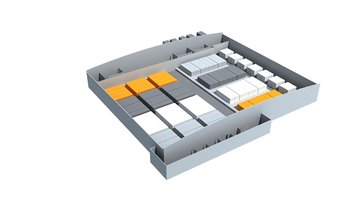With businesses now expecting IT ‘as a service’ complexity is increasing rapidly, and new phenomena like Big Data and IoT are all adding to the workload. In a nutshell demand for computing capacity is rising fast and it’s likely to continue that way for many years to come.
So how do you respond? Right now, the problem is that many IT leaders are simply running out of power and the space. They’re essentially working with data centres that are incapable of supporting modern power densities and either nearing or at full capacity.
No room to move?
There are also challenges when businesses need to expand in traditional colocation environments. Many organisations who entered these contracts expected to be able to scale up in a year’s time are now finding the space has all gone. In these circumstances, there’s simply no way they can expand their current footprint without going elsewhere, adding yet more complexity and costs. Worse still others had to dramatically over purchase capacity just in case and are left with underutilised space for which they are paying high prices.
Over-provisioning, on face value, would seem a rational response to make sure that you’ve always got capacity to hand. The problem is that it also creates a lot of waste. Wasted energy and wasted money because you’re paying extra capacity and over-provisioning today.
Cutting through the hype
Next-Generation. Data Centre 2.0. Future proof. The data centre world is full of marketing hyperbole, vague terms which don’t help businesses make solid decisions on how to address their IT infrastructure issues. Businesses need to cut through the hype to get a better understanding of how a more modular approach can move them beyond sole reliance on the traditional concept of racks stored in one giant warehouse.
Simply put, the modular approach is a better and more flexible solution for the future because it enables businesses to buy prefabricated modules inside a data centre which are much easier to expand and tailor to changing needs.
Modular centres are also much more efficient than their traditional counterparts because they have the ability to cool each module (and in the case of IO each zone in each module) rather than the entire centre. Think of it like a bottle of beer. Would you put in the fridge, or cool it down by turning down the air conditioning? Modular data centres are the fridge, far more efficient.
The other advantage is that this cooling is achieved with precise airflow systems that support more kWh per cabinet – typically up to 20-25 kW per rack compared to 5 kW per rack in a traditional facility. Traditional raised-floor data centres – even very modern ones – cannot accommodate anywhere near the density that a purpose-built modular data centre can.
The modular approach enables you to scale up both horizontally (in terms of footprint) and vertically (by increasing density). It makes colocation a far more workable and efficient solution for many organisations than it has in the past.
Questions to ask yourself
So could a modular centre be the right solution for you? It’s fair to say that not every application needs a modular data centre – for example, you might find it advantageous to deploy applications that demand medium-or high-density in a module and deploy low-density applications in a cabinet or cage on raised floor in the same data centre.
The choice is always yours. But what’s certain is that modular – given time and more education – is going to play a major role in the compute capacity challenges that we all need to face over the coming years.
Checklist before you take the plunge:
- Can I scale both power and space as my demand for compute capacity changes?
- What is the maximum watts per square foot (or kW per rack)?
- Can I support mixed densities?
- How many square feet of unused space are available?
- What is the total MW capacity available?
- How long does it take to deploy new IT infrastructure?
- Can I plan capacity better?
- Do I have options that enable me to match density to application needs?
If you’ve come up with a negative response to any more than 2 or 3 of these questions, it’s likely that a modular approach is going to be a good solution for you. As such, it’s well worth further consideration.


